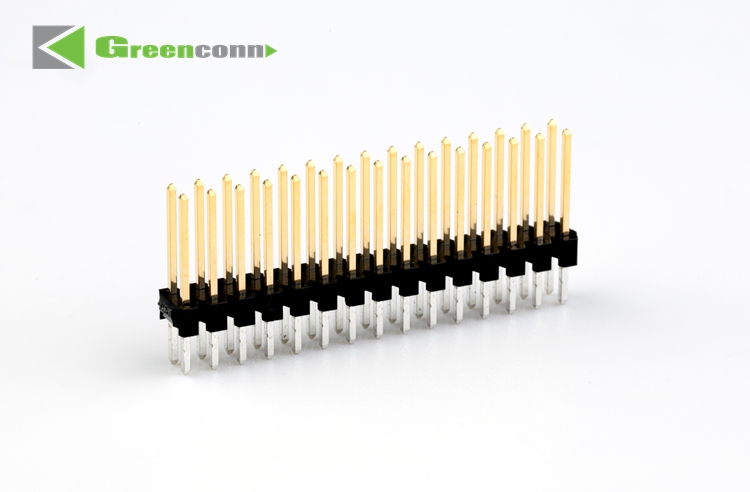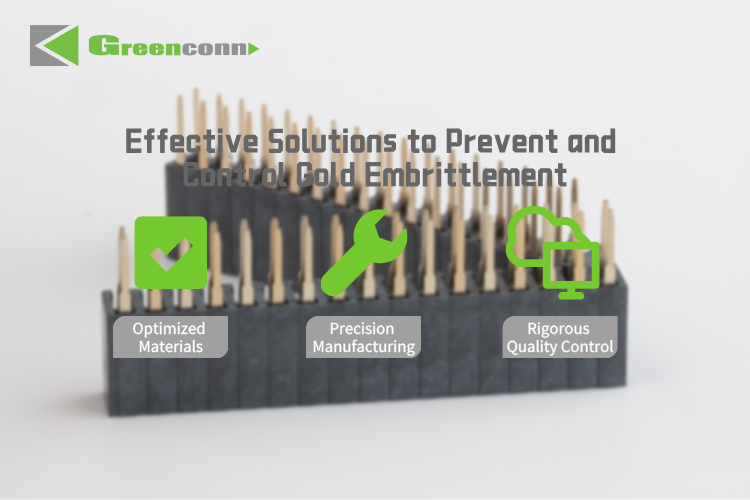Gold Embrittlement in Solder Joints: The Hidden Threat to Long-Term Reliability
In high-reliability electronics, the choice of plating material plays a pivotal role. Gold (Au), with its excellent electrical conductivity and corrosion resistance, is widely used for connector contact terminals to ensure stable signal transmission and long product lifespan. However, under certain conditions, this advantage can turn into a hidden reliability risk—commonly known in the industry as Gold Embrittlement.

What Is Gold Embrittlement—and Why Should You Care?
Gold embrittlement refers to the formation of brittle intermetallic compounds (IMCs) when gold or gold alloys interact with other metals—such as tin, copper, or nickel—during high-temperature processes like soldering. These compounds significantly reduce the mechanical properties of solder joints, leading to loss of ductility, increased brittleness, and susceptibility to cracking.
This phenomenon is especially common in BGA packages and connector tail soldering, where solder joint reliability is critical. If not properly managed, gold embrittlement can result in solder joint failure, seriously compromising the overall reliability of the device.
What Triggers Gold Embrittlement?
1. Unbalanced Intermetallic Reactions
· Formation of brittle AuSn₄ compounds between gold and tin
These hard and brittle IMCs act as potential crack paths within the solder joint, significantly weakening mechanical strength.
· Diffusion between gold and base metals like copper or nickel
Uneven diffusion can lead to the formation of brittle intermetallic layers at the interface, compromising structural integrity.
2. The Double-Edged Sword of Gold Plating
· Excessively thick gold plating fails to dissolve completely during soldering
When gold content exceeds ~3–5 wt%, excess IMC formation increases the risk of brittle fracture.
· Electroplating impurities or trapped hydrogen cause hydrogen embrittlement
Residual impurities or hydrogen atoms inside the metal lattice reduce ductility and may trigger delayed cracking.
· Lack of a nickel barrier leads to direct gold–copper reactions
Gold readily forms brittle alloys with copper or other metals, weakening interfacial adhesion and increasing stress concentrations.
3. Insufficient Soldering Process Control
· Inadequate temperature or dwell time results in poor gold diffusion
Residual gold can accumulate in the joint, creating localized brittle zones and crack initiation sites.
· Lead-free solders react more aggressively with gold
Solders like SAC305 form brittle IMCs rapidly with gold, reducing fatigue life.
· Localized gold buildup leads to mechanical property imbalance
Uneven gold distribution makes solder joints more prone to cracking.
4. Long-Term Environmental Stress
· Thermal cycling accelerates brittle IMC layer growth
Repeated heating and cooling causes IMC layers to thicken, making solder joints more vulnerable to fracture.
· Mechanical vibration propagates existing cracks
Brittle regions can rapidly expand under repeated mechanical stress, shortening joint lifespan.
· Corrosive environments degrade metallurgical bonds
Moisture or chemical ingress at solder interfaces weakens bonding strength and accelerates failure.

How to Prevent Gold Embrittlement
1. Optimize Material Structure
· Segmented Plating Design
Use selective plating: maintain gold in contact areas for conductivity, and apply tin-based plating in soldering zones. This "Gold-on-Contact, Tin-on-Tail" approach helps suppress embrittlement risk while preserving performance.
· Multilayer Barrier Structures
Insert nickel or similar barrier layers between gold and the substrate to prevent intermetallic diffusion. Enhanced stack designs can be used in high-frequency or high-temperature applications.
2. Precision Process Control
· Smart Soldering Profile Management
Adjust preheat and dwell times according to the solder alloy used. Proper temperature control ensures uniform gold diffusion and minimizes localized accumulation.
· Advanced Gold Removal or Tin Substitution
Use pre-tinning or immersion tin processes to partially replace gold with solder-friendly materials. This promotes better wetting and reduces oxidation risk.
3. Rigorous Quality Assurance
· Differentiated Plating Thickness Standards
Implement separate thickness specifications for contact and soldering areas. Use professional measurement tools to ensure compliance.
· Comprehensive Reliability Testing
Conduct accelerated tests (e.g., thermal shock, vibration) to monitor microstructural changes and validate long-term reliability.
Gold is an essential and irreplaceable material in high-performance connectors. However, if not properly controlled, it may also introduce soldering risks that are not immediately visible. Gold embrittlement, though subtle, can be a critical failure point in harsh environments.
That's why material selection, process optimization, and quality assurance must be considered as early as the design phase. At Greenconn, we are committed to providing reliable, long-lasting interconnect solutions through advanced materials engineering and precision manufacturing.
Have questions about plating materials or solder process compatibility? Reach out to our team to learn more.



